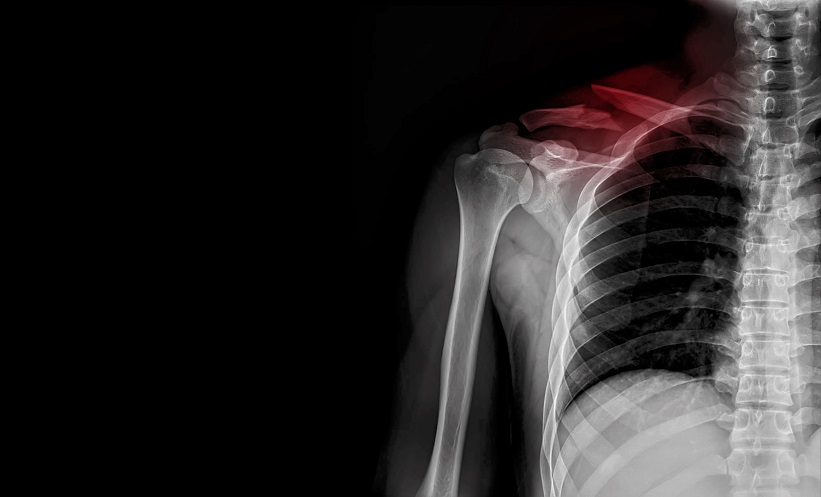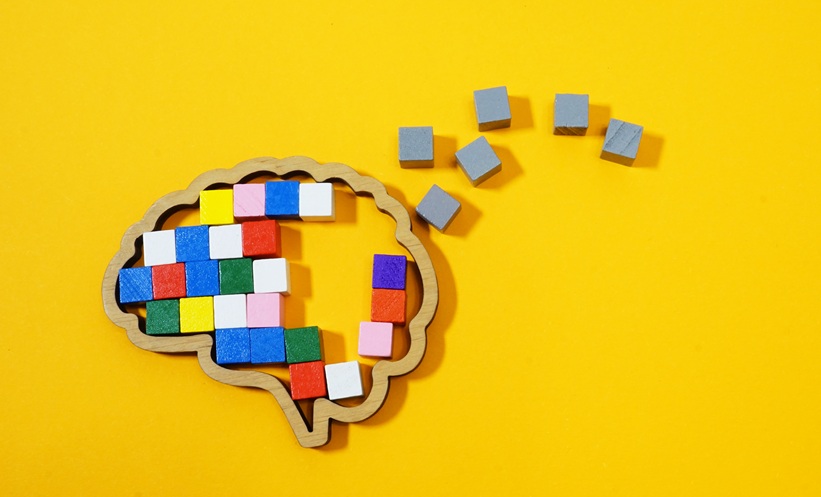Andrea Rockall | Clinical Chair of Radiology, Imperial College London, UK; European Society of Radiology (ESR) First Vice-President.
Citation: EMJ Radiol. 2024;5[1]:36-39. https://doi.org/10.33590/emjradiol/SCDS7604.
![]()
What originally inspired you to pursue a career in radiology?
Well, it gives away my age a little bit, but when I had just qualified as a medical doctor, and I was doing what in England are called ‘house jobs’, MRI was actually just coming in. I can remember seeing the images, and actually being struck by this incredibly beautiful thing that we could demonstrate. CT was already gaining a lot of traction, but it was still relatively new, and MRI was really new. I loved the combination of trying to solve a puzzle: “What is the diagnosis, and what has happened to the patient based on their symptoms?”, and then having these fantastic new tools at our disposal.
In addition, there were developments happening in interventional radiology, and it just seemed to me like a very, very exciting speciality to go into. I actually did my exams in internal medicine, which was, at that time, quite standard within the UK. You did your internal medicine, or your Membership of the Royal Colleges of Physicians (MRCP), or your Fellowship of the Royal Colleges of Physicians (FRCS) in surgery, and then you would apply for radiology. So, I had this period of time when I was a houseman, where I could see all of the imaging developments that were happening in the tumour boards, with the images coming in; it just really looked fantastic.
You chaired, and took part in, several presentations and sessions at the European Congress of Radiology (ECR) this year, in Vienna, Austria. Which sessions did you most enjoy attending?
Rick Abramson’s plenary, on the digital AI interface, was really spectacular. It was looking at where we’ve come from, and where we’re going. If I think of my own journey, going from when MRI was emerging as a new technology, and now we’re in this era of artificial intelligence (AI), you can see the pace of innovation in radiology has been really dramatic over the last decades. There are limits at the moment with what AI can offer us, but nonetheless, there are some benefits that we can potentially gain from having AI tools there. However, there are still lots of challenges in understanding the health economic arguments, the safety side, the benchmarking of tools, and what have you. There’s a lot of work for us to be doing. But nonetheless, the opportunities are very exciting; we will be facing a big change in our careers, as AI-supported radiology becomes a reality, and that will change the way that we practice. That was one session that I just loved. It was brilliant. It was inspirational.
Of course, because it’s my area of passion, there are also the sustainability sessions. I spoke in a session on the ‘green hospital’, and we kicked off with how departments can identify resource savings from implementing green policies. We also had a talk on contrast media: how we need to be careful about our use of contrast media, making sure that we get good images, but at the same time using as little contrast as we can, in order to get that vivid image. And then, how do we dispose of those? That session was actually packed out. We had a very full discussion at the end, which was lovely.
As First Vice-President of ESR, and future President, what changes do you hope to implement in the society in the coming years, and what have you already been working on?
There have been some really exciting changes in just the past few months that many of us have been pushing for, which I’m really pleased about. We implemented a new vertical young committee, and within that, we have the sustainability subcommittee, and an Equity, Diversity, and Inclusion subcommittee. I think these are really important to our community, and they fill a gap in our executive council. This is a new development, and I am really looking forward to working with the committee and subcommittee chairs to really build those areas of ESR commitment. We also have another new subcommittee, which is digital AI and emerging technologies. The AI will shift across from the quality and safety committee over a period of time; it hasn’t gone straight away, but that’s our overarching plan. This also allows us to have a committee that really focuses on emerging technologies, as we’ve seen this incredible change that we are continuously going through; how do we adapt to the changes of things like photon counting CT, for example? So, those things have come in.
One of the things I would love to bring to the ESR, in order to really reach out to our members and encourage engagement, is find a way for people to be able to indicate that they’re interested in getting involved in subcommittees and committees. I’m trying to see if we can have some kind of volunteering portal, where people can say, actually I’m really interested in, say, sustainability. They can let us know about their motivations, and send across their CVs, and then when places come up, the subcommittee and committee chairs will already have a list of people that have indicated that they’d really like to work with us. They can then evaluate the applicants, and invite people to join. So, I’d love to have some kind of system for our members to be able to volunteer, get involved, and take part.
Much of your work focuses on sustainability in healthcare, particularly in medical imaging, which contributes significantly to global emissions. How do you think radiology can improve to become a more sustainable practice?
It is very important for us to make this transition, and we have to make it relatively quickly. This is why I really feel strongly about taking a leadership role in trying to help the process. There are some things that are easy to do, which will actually save money in departments; there are a lot of energy saving tips and tricks to do with the automated switch-off of large and small machinery, and laptops. There are simple solutions for waste management that can actually dramatically impact carbon usage; for example, the correct waste disposal of plastic tubing. A lot of it often ends up in the sharps bin, but if you put it in the appropriate waste stream, and just put the sharp aspect in the sharps bin, you can reduce your carbon imprint. In our department, two CT scanners have a project like that, and they have reduced our sharps bin waste by 98%. That actually saved the department a lot of money, because the sharps bin waste is very costly.
I think there’s a real mission to educate. What can we do now in our departments, with really very little effort? But then, there is another whole package which is more complex; for example, pathways of care. Can we make sure, for example, that the patient has one journey to the hospital, instead of three, for their diagnostic tests? In a lifecycle assessment of the CT scanner, we found that 60% of our emissions were related to patient travel. So, if we can co-ordinate outpatient appointments, imaging, and diagnostic blood tests, this will have a big impact; this may be in the medium term, and is a little bit more difficult to impact.
Also in the medium term, although I wish it was in the short-term, is embedding a decision support software, so that we can image the patient with the right test the first time. We don’t want the patient to have the wrong test, to say, “oh no, you shouldn’t have had that one. You should have had this one,” and then they have to come back again. All of the resources that are used for that low-value imaging have really been wasted; not only for spaces on the scanner, waiting lists, etc. We have all of the downstream effects: all of the scans will be stored on a server, creating carbon for another 20 years. None of this benefits the patient’s care. So, I think decision support, and some of the care pathways, are medium term. When we’re doing procurement, we need to have sustainability as one of the scoring factors, so I need to look at asking our industry partners: do they have a recycling system when they take the equipment back? Do they have anything that’s actually been refurbished? Can they refurbish our systems as we upgrade? There are different levels of difficulty.
In 2020, you participated in an interview discussing the role of AI in breast cancer diagnosis. Four years on, to what extent do you believe AI has been implemented in the field?
In the UK, interestingly, it’s difficult to know how many implementations there are. This is why we’ve developed a registry for deployed AI tools, because there is a registry of tools that have permission to be marketed and sold, but we don’t have a registry of where they’re deployed. We’re developing this registry so that we can know who has deployed what, and where. I think there is very limited actual clinical deployment in the UK. But there is a current a very large study going on, funded by the National Institutes for Health and Care Research (NIHR), a multicentre, multi-vendor study, led by Fiona Gilbert from the University of Cambridge, UK. This study will hopefully provide a strong, independent evidence base, to allow the National Health Service (NHS) to say, “actually, this now has good evidence for implementation, and we can sign that off.” I am sure there are a lot of other breast products that will be going on, for breast density and things like that, but I think the big health economic impact is going to be that, if you can use AI as a second reader, that frees up a radiologist. This therefore makes a really strong economic argument for efficiency.
What, in your opinion, are some of the biggest challenges facing radiology today, in the UK and globally?
Number one is workforce shortages. At first, I thought it was just within the UK, but I think everywhere is having workforce shortages. How do we train enough radiologists quickly enough to expand into this growing field? Of course, those that are working in the field need to have the time to train those that are coming through. We also have huge waiting lists. How do we manage the waiting lists versus the workforce and training aspects? There is a hope, of course, as I said with the breast, that if you can have some AI tools that can help with this, this may help us with second reading, for example. AI may also help us in some of the workflow, with the rapid triage of cases, etc. However, I think that workforce is definitely the biggest issue.
Another big issue that we have is that we’re in a period of massive change, which can be stressful for people, especially when they’re already stretched from workforce shortages. So, bringing in AI will be a big transformation for us in terms of how we work. Also, with regard to sustainability, we’ve got to crack that nut.







